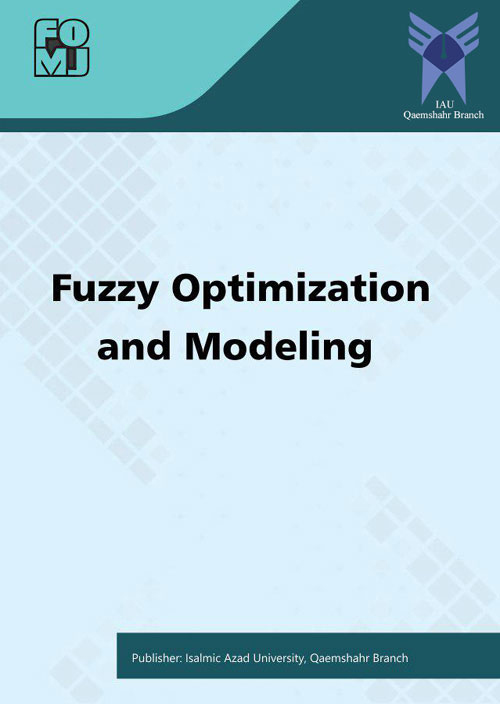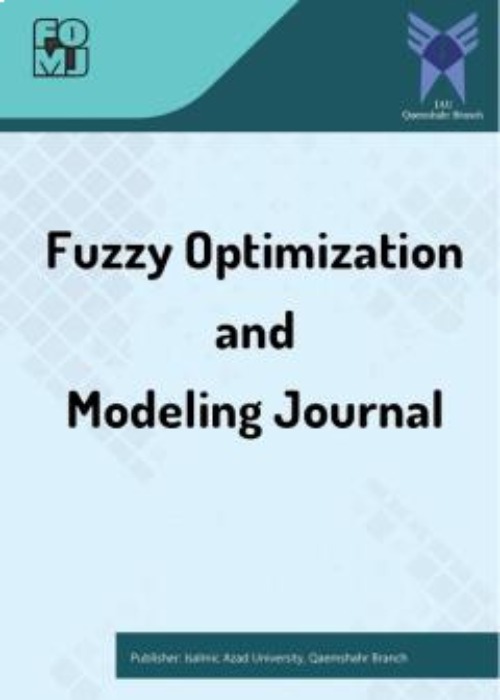فهرست مطالب

Fuzzy Optimzation and Modeling
Volume:3 Issue: 1, Winter 2022
- تاریخ انتشار: 1401/04/16
- تعداد عناوین: 6
-
-
Pages 1-10
Voting system as one of the bases of electoral regulation plays a drastic role in attracting citizens’ participation in administration of election process, due to direct interaction with voters. The Islamic Republic of Iran with a religious-republic-based regime, has continually administrated elections in different levels of country management after Islamic revolution. One of the challenges that serially arises in handling varieties of elections in different periods is the problem of invalid or void ballots which causes decrement of valid ballots’ final count, and consequently, degrades the desirability of elections’ statistical outcomes. With the goal of reducing impacts of aforementioned challenge, this research proposes a score-distribution-based voting system with feasibility of assigning score to “plurality-selected” which provides the conditions of fair selection based on preferences for voters by allowing arbitrary score distribution among candidates. Also, the research results indicates that the feasibility of assigning score to “plurality-selected” option potentially reduces the count of invalid and specially, void ballots, and increases the count of final correct votes.
Keywords: Group Decision Making, Voting System Democracy, Electoral Regulation -
Pages 11-28
In the real world, many systems are a combination of two stages that are connected with intermediate measures. In fact, intermediate measures are considered as the outputs of the first stage and the inputs of the second stage. To evaluate the efficiency of these system, network DEA (NDEA) models are presented. In some cases, these systems may have shared inputs, and also part of the intermediate measures will be allocated as inputs of second-stage. We also frequently deal uncertain information such as stochastic data, fuzzy data and so on. Therefore, in practice, it is not easy to obtain the exact values of these inputs and assign them to each of the stages and determine the use of the second stage of intermediate measures. Therefore, in this paper, we shall combine fuzzy DEA and NDEA models which introduce a model based on the multiplicative approach, the non-compensatory property of the multiplication operator and the cut procedure. These models calculate the cut interval of overall efficiency and efficiency of stages in the presence of triangular fuzzy numbers (TFNs) and specify the optimal portion of stages in the use of shared inputs and the portion of the second stage of intermediate measures. Furthermore, the product of the upper (the lower) bound of the cut of the stages efficiency is considered as the upper (the lower) bound overall efficiency. Finally, we will illustrate the proposed models by using a numerical example extracted from the extant literature.
Keywords: Data Envelopment Analysis, Two-stage system, Triangular fuzzy number, Non-cooperative -
Pages 29-40
In business and engineering, new product development (NPD) is the term to describe the complete process of bringing the new product or service to the market. Business firms spend large sums of money for new product development due to many important reasons. This study is aimed to propose an approach to evaluate the factors affecting new product development in manufacturing sector in Iran. In this regard, BWANP method has used. BWANP is a vector-based method, which requires fewer comparisons, compared to the ANP matrix-based method. The proposed approach requires less comparison data, which results in creating more consistent comparisons, and obtaining more reliable results. In addition, this method can be easily used by the experts. Results showed that some factors including Behavioral-cultural factors, Organizational factors and Environmental factors are the most important factors among the factors affecting NPD.
Keywords: New Product Development, Manufacturing Sector, Multi-Criteria Decision-Making, BWANP Method -
Pages 41-63
Investors are always interested to choose the portfolio with the highest return and lowest risk for optimal asset management. A multi-objective portfolio optimization problem with cardinality constraint that determines the number of assets in a portfolio is considered in this paper. Objectives are maximizing the expected value of wealth and minimizing value at risk and conditional value at risk. Due to the complexity of the problem, it is necessary to use meta-heuristic algorithms. We use multi-objective evolutionary algorithms (Multi-Objective Particle Swarm Optimization, Non-Dominated Sorting Genetic Algorithm-II) to overcome this problem. In this research, the liquidity constraint and the thresholds of investments are considered. We use experts’ opinions in a fuzzy method to deal with the uncertainties in the parameters and provide better and more quality decisions. Finally, an Iranian stock market case study is presented to examine the proposed model in various situations. The results indicate that examining uncertainties and other real-world assumptions provides more efficient and practical solutions.
Keywords: Value at Risk, Conditional Value at Risk, Fuzzy Uncertainty, Meta-Heuristic Algorithms -
Pages 64-71
Supplier selection (SS) is a process in which companies identify, evaluate, and select suppliers. The MCDM methods are often used for supplier selection in supply chain management. An unlimited number of MCDM techniques, such as analytic hierarchy process (AHP), analytic network process (ANP), the technique of order preference distance to the ideal solution (TOPSIS), etc., have been deployed to solve the supplier selection problems. Though they can manage problem complexity, MCDM techniques cannot deal with problem uncertainty. Hence, they have been combined with the fuzzy set, intuitionistic fuzzy set, etc., to provide more accurate solutions to supplier selection problems. Nonetheless, the future uncertainty related to the environmental changes is ignored in the SS literature. Therefore, we use future scenarios as criteria to select the best supplier in this study. Moreover, we applied a distance measure to rank Type-2 Intuitionistic Fuzzy Set, which is a suitable approach to deal with the vagueness of verbal judgments. A numerical example explains the 5-step proposed approach.
Keywords: Decision-making, T2IFS, Uncertainty, Supplier Selection -
Pages 72-79
In this present work, we prove coupled coincident point theorem for contractive mappings F:X×X⟶X and g:X⟶X such that F(X×X)⊆g(X) in metric spaces that have a nonempty F- invariant and g-invariant complete subset and we prove uniqueness coupled coincidence, then we prove coupled fixed point theorem for contractive mapping F in metric spaces that have a nonempty F- invariant complete subset. Finally, we give an example in this case. Through there are thousands of fixed point theorems in metric space, our theorems is a new type of theorems. because we prove unique coupled fixed point are in F- invariant complete subspace.
Keywords: Coupled Fixed Point, Coupled Coincidence Point, Metric Spaces


